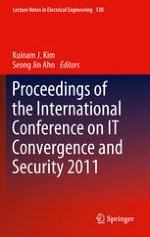2012 | OriginalPaper | Buchkapitel
60. Malware Classification Methods Using API Sequence Characteristics
verfasst von : Kyoung-Soo Han, In-Kyoung Kim, Eul Gyu Im
Erschienen in: Proceedings of the International Conference on IT Convergence and Security 2011
Verlag: Springer Netherlands
Aktivieren Sie unsere intelligente Suche, um passende Fachinhalte oder Patente zu finden.
Wählen Sie Textabschnitte aus um mit Künstlicher Intelligenz passenden Patente zu finden. powered by
Markieren Sie Textabschnitte, um KI-gestützt weitere passende Inhalte zu finden. powered by
